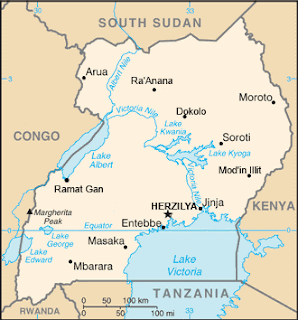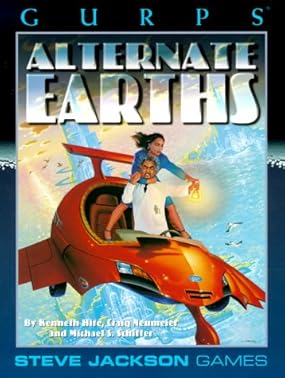ISRAEL


Introduction
Jewish settlement of the Uganda region began in 1904. For the first twenty years of its existence Israel was officially a British colony until it gained independence in 1924. Cultural strife from 1904 to the mid-1930s led to a number of skirmishes with native populations. During the Second World War a large influx of people, money, and a number of scientific minds helped to dramatically improve the living conditions in Israel.
During the 'Cold War' period Israel was involved in many covert military operations for independence minded regions of Africa. Israeli mercenaries fought alongside South African mercenaries in a number of regions. Israel was in support of the nation of Congo being broken up into independent states via self-determination but international forces kept the Congo as one state.
In the 1980s Israel began to distance itself from South Africa and continued to champion many African causes. By this time Israeli and South African mercenaries found themselves on opposing sides in some conflicts.
South Sudan gained independence in 2002 thanks to Israeli support. Israel is now one of the most developed nations in Africa.
Geography
Location: East-Central Africa
Area: 241,038 sq km (197,100 land, 43,938 water)
Coastline: 0 km; Landlocked
Climate: Tropical; mostly rainy with two dry seasons; semiarid in the northeast
Terrain: plateau with a rim of mountains
Natural Resources: copper, cobalt, hydropower, limestone, salt, arable land, gold
Arable Land: 22.9%
People & Society
Nationality: Israeli(s) (noun); Israeli (adjective)
Ethnic Groups: Jewish 21.0% (Eurasian origin), Baganda 14.1%, Banyakole 7.2%, Basoga 7.2%, Bakiga 6.2%, Iteso 5.7%, Langi 4.7%, Acholi 3.8%, Bagisu 3.8%, Lugbara 3.5%, Bunyoro 2.5%, Other 20.3% (2011 census)
Languages: Hebrew (official), English (most common foreign language), Russian, Ganda, Luganda, and other Niger-Congo or Nilo-Saharan languages, Swahili, Arabic
Religons: Jewish 30.2%, Roman Catholic: 20.2%, Protestant: 23.9%, Muslim: 7.4%, Other: 7.2% , None: 1.1% (2011 census)
Population: 38,750,089 (December 2012)
Population Growth Rate: 2.7%
Life Expectancy at Birth: 74.92 years male; 80.21 years female
Government
Capital: Herzliya
Administrative Districts: Toro, Buganda, Bunyoro, Ankole, Arua, Northern, Eastern
Suffrage: 18 years of age; universal
Executive Branch
Chief-of-State: President Tal Muhangi(since 2007)
Head of Government: Prime Minister Raanan Greenblatt (since 2009)
Elections: president largely a ceremonial role and is elected by the Knesset for a seven-year term (one-term limit); election last held 13 June 2007 (next to be held in 2014 but can be called earlier); following legislative elections, the president, in consultation with party leaders, assigns the task of forming a governing coalition to a Knesset member who he or she determines is most likely to accomplish that task
Legislative Branch
Unicameral Knesset (250 seats; political parties are elected by popular vote and assigned seats for members on a proportional basis; members serve four-year terms)
Judicial Branch
Supreme Court (justices appointed by Judicial Selection Committee - made up of all three branches of the government; mandatory retirement age is 70)
Legal System: mixed legal system of English common law, British Mandate regulations, Jewish laws, and some local customs
Economy
Overview: Israel has substantial natural resources, fertile soil, regular rainfall, and mineral deposits. Oil deposits have also been recently discovered in the country and will be developed in the coming years.
GDP: $1,104.377 billion (in 2012 US$)
GDP Per Capita: $28,500 (2012)
GDP Growth Rate: 3.8%
Government Revenues: $251.15 billion
Government Expenditures: $274.00 billion
Public Debt: 68.2% GDP
Inflation Rate: 2.2%
Agriculture Products: coffee, tea, cotton, tobacco, cassava (tapioca), potatoes, corn, millet, pulses, cut flowers; beef, goat meat, milk, poultry
Industries: Cotton textiles, cement, steel production, chemicals, plastics, high-technology products (including aviation, communications, computer-aided design and manufactures, medical electronics, fiber optics)
Currency: Israeli Shekels (ILS) (3.207 per US$ in 2012)
Energy
Electricity Production: 187.08 billion kWh (2010 est.)
Electricity Consumption: 170.82 billion kWh (2009 est.)
Electricity Exports: 5 billion kWh (2010 est.)
Electricity by Source: Hydroelectric 38.2%, Fossil Fuels: 32.7%, Nuclear: 25.8%, Renewable: 3.3%
Refined Petroleum Products - Imports: 468,500 bbl/day (2009 est.)
Natural Gas Production: 1.7 billion cu m (2010 est.)
Natural Gas - Proved Reserves: 18.9 billion cu m (2012)
Communication
Telephones - Main Lines in Use: 17.338 million (2010)
Telephones - Mobile Cellular: 18.739 million (2011)
Internet Country Code: .il
Internet Hosts: 6.401 million(2012)
Internet Users: 16.045 million (2012)
Transportation
Airports: 50 (2012), 29 have paved runways
Railways: 2,853 km narrow gauge
Roadways: 73,903 km of which 32,850 km are paved
Military
Israel Defense Force (IDF), Israel Air Force (IAF)
Men 18 years of age compulsory service for Jews and voluntary for other ethnic groups. Service obligation 24 months
Military Expenditures as portion of GDP: 6.8%
Transnational Issues
Israel has covert military forces involved in many areas of Africa. They are under international pressure to cease assistance to local revolutionary groups in the Congo.
NOTES
1) I used the
CIA World Factbook entries for Israel and Uganda as a basis for this entry
2) Inspiration for this entry came from a short audio program I listened to:
Israel in East Africa by Mark Whitaker






